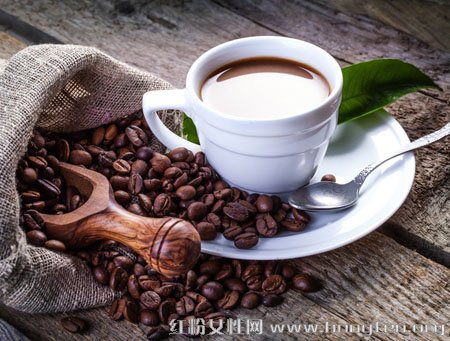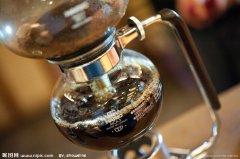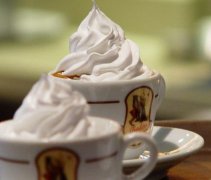There are five ways to cook coffee according to the contact between water and coffee powder.

All coffee is made from ground coffee and hot water; when it is done, the coffee is cleaned out.
The thickness of the minced coffee is related to the cooking method chosen. Proper water temperature is very important.
The choice of water temperature is related to cooking utensils, coffee bean species, coffee bean baking degree, the water temperature is too low, the flavor of coffee beans can not be fully extracted; water temperature is too high, excessive extraction, taste deterioration and often bitter. If the water passes through the coffee only once, the finished product will contain mainly soluble substances (including caffeine). If the water circulates through the coffee powder many times (like a common circulating filter), the less soluble substances in the coffee beans will also enter the finished product, resulting in a bitter taste; this method is not favored by enthusiasts).
The common ratio of coffee powder to water in Western countries is 15,30ml coffee powder (one to two tablespoons): 300ml water (six ounces). Coffee lovers often take the upper limit of this ratio. Please pay attention to make appropriate adjustments according to the thickness of the coffee powder. Continuous heating destroys the flavor of brewed coffee, and degradation also occurs at room temperature. Therefore, it is often a failure to keep the coffee warm. However, in an anaerobic environment, coffee can be preserved for a long time at room temperature. So you can see sealed delicacy coffee on the store shelves.
Nowadays, many electric coffee pots are highly automated, and some even include the function of grinding coffee beans.
According to the contact mode between water and coffee powder, coffee cooking can be classified into five categories: "steaming method", "pressurization method", "gravity method", "leaching method" and "ice brewing method".
1. Soaking method
Don't be misled by the name. Don't boil the coffee (at least not for too long), or it will be too bitter.
The easiest way is to put the coffee powder in the cup, add hot water, let it cool and sink to the bottom. This is an old method, and it is still used in some parts of Indonesia. Be careful not to eat the coffee at the bottom of the cup. The advantage of this method is that it is simple and the water temperature is just right.
Turkish coffee is an early prescription and is still used in the Middle East, North Africa, East Africa, Turkey, Greece and the Balkans. Ultra-fine coffee powder is boiled with water in a small container, usually seasoned with sugar and cardamom. The espresso in the cup has foam on it and a layer of silted powder underneath.
"Cowboy Coffee" is to boil the minced coffee directly in the pot and drink it. The name implies a stopgap measure under humble conditions; however, some people prefer it. This is their traditional cooking method in Finland and Sweden, where coffee makers spend the most.
two。 Pressure method
Espresso is made from 80 to 96 degrees Celsius hot water at a force of 8 to 9 atmospheres through compacted coffee cakes, usually only 30 milliliters per cup. It is one of the strongest of the common coffee, with a unique aroma and a touch of oil (Crema) floating on the surface. It can be drunk alone; it can also be further made into a variety of other drinks. Because of its fast brewing speed, high concentration and low caffeine content, this method is used in many chain coffee shops or seasoned coffee.
The mocha pot, also known as the Italian coffee pot, is a three-layer stove. After boiling water at the bottom, the coffee powder is pushed through the middle layer by steam pressure to enter the upper layer, and the coffee concentration obtained is comparable to that of espresso, but there is no oil slick, but if a pressure reducing gasket is installed at the coffee spill outlet, the golden crema can be extracted. The mocha pot and the automatic espresso machine have the same structure, but the way the water comes out is upside down. Remove the bottom of the pot as soon as possible after the coffee spills about 30~40cc, and then wipe it on the bottom with a cold towel.
3. Gravity method
In the American coffee or filter paper method, the minced coffee is placed on a filter paper or metal filter and hot water flows from top to bottom. The concentration of coffee depends on the proportion of water and the thickness of coffee powder, but it is generally lower than espresso.
Electric circulating filters were very common in the United States before the 1970s. It is different from the mocha pot mentioned above; the hot water boils into the top floor, then passes through the coffee scraps from top to bottom and goes back to the heating room; it circulates several times. It is precisely because the hot water passes through the coffee powder many times in this method, this kind of coffee has poor taste.
4. Leaching method
The French filter Press (French press) is a tall thin glass cylinder with a piston with a filter. Soak the hot water and coffee powder in a cylinder for four to seven minutes, then press the coffee powder to the bottom by a piston filter, and the top coffee can be poured out to drink. This "complete immersion method" is considered by many experts to be an ideal household method for making coffee.
Coffee bag is a portable package for travel, which is very rare at ordinary times. Malaysians put coffee powder in cotton pockets, soak them in hot water, and then remove the cloth bags from the hot water. This kind of pocket is the same as using filter paper. This is more suitable for strong local coffee. The coffee in the bag can be reused.
The vacuum coffee pot (Syphon) is made by connecting a heating container and a funnel container. The connecting part is a filter with coffee dust on it. After boiling in the heating container, the water goes into the funnel container and mixes with the coffee powder; at this time, the heating source is cut off, and the partial vacuum formed by the cooling of the heating container pulls the coffee back to the bottom through the filter.
5. Ice brewing method
Ice brewed coffee, also known as ice drop coffee, is not the use of hot water, but the use of ice slowly melting ice water, slowly dripping through the filter containing coffee powder. So very slow, there is a cup of ice-brewed coffee, so the cost is high, but the taste is excellent.
Important Notice :
前街咖啡 FrontStreet Coffee has moved to new addredd:
FrontStreet Coffee Address: 315,Donghua East Road,GuangZhou
Tel:020 38364473
- Prev

How to make a good cup of coffee with a follicle?
Making a good cup of coffee is the quickest way to taste good coffee without too much trouble and no extra utensils, but there are still some things to pay attention to. Cleaning your coffee pot if you want to make a good cup of coffee, the most important and easily overlooked thing is the cleaning of the coffee pot, so you should wash it well with hot water first, and you'd better brush each carefully with a kettle brush.
- Next

Con Panna (Campbell Coffee) DIY diagram
This time we are going to make Con Panna, the simplest Italian fancy coffee, with whipped cream on the basis of Espresso. It sounds easy, but it's not easy to do it well. Italian coffee is famous all over the world. If you want to taste the classic espresso, you have to go to the Italian Cafe. This time, nine of us came to Coff.
Related
- Detailed explanation of Jadeite planting Land in Panamanian Jadeite Manor introduction to the grading system of Jadeite competitive bidding, Red bid, Green bid and Rose Summer
- Story of Coffee planting in Brenka region of Costa Rica Stonehenge Manor anaerobic heavy honey treatment of flavor mouth
- What's on the barrel of Blue Mountain Coffee beans?
- Can American coffee also pull flowers? How to use hot American style to pull out a good-looking pattern?
- Can you make a cold extract with coffee beans? What is the right proportion for cold-extracted coffee formula?
- Indonesian PWN Gold Mandrine Coffee Origin Features Flavor How to Chong? Mandolin coffee is American.
- A brief introduction to the flavor characteristics of Brazilian yellow bourbon coffee beans
- What is the effect of different water quality on the flavor of cold-extracted coffee? What kind of water is best for brewing coffee?
- Why do you think of Rose Summer whenever you mention Panamanian coffee?
- Introduction to the characteristics of authentic blue mountain coffee bean producing areas? What is the CIB Coffee Authority in Jamaica?

